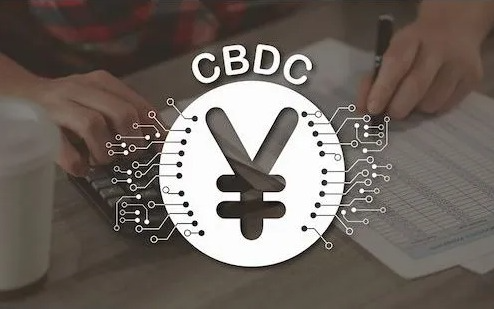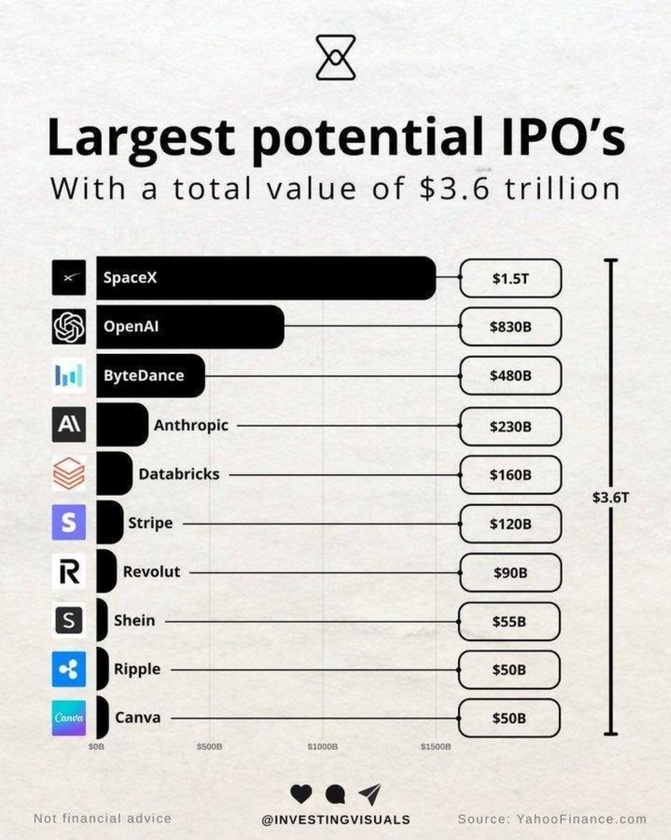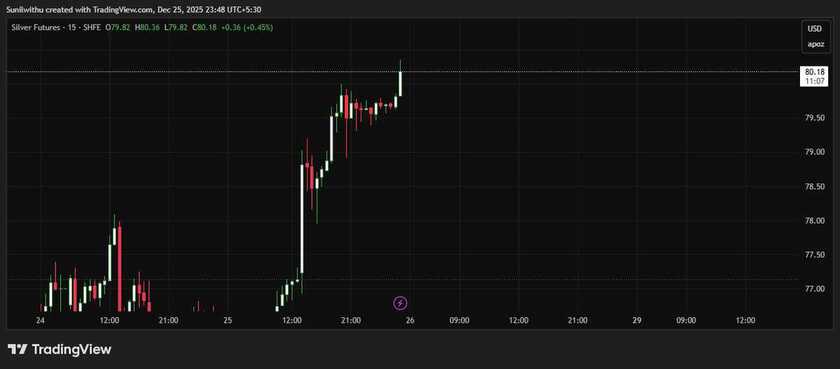According to the Bank of International Settlement (BIS), China just finished a six-week cross-border CBDC test. The test was called Project mBridge.
According to the Bank of International Settlement (BIS) press release, China just finished a six-week cross-border CBDC test. The test was called Project mBridge. It was the most substantial CBDC test any nation has performed to date. The participants were the BIS Innovation Hub Hong Kong Centre, the Hong Kong Monetary Authority, the Bank of Thailand, the Central Bank of the United Arab Emirates, and the Digital Currency Institute of the People's Bank of China.
Details of the Test

Over $12 million was issued onto the platform in multiple digital currencies. Over the six weeks, there were 164 payments between 20 different commercial banks in four different jurisdictions, with 74 transactions in the e-CNY digital currency. The transactions totaled more than $22 million and were real-value settlements on behalf of corporate customers. The technology used was a new blockchain, the mBridge Ledger. The mBridge Ledger was “built by central banks to support real-time, peer-to-peer, cross-border payments and foreign exchange transactions using CBDCs. Read the full report here.
China conducted the test to respond to possible American sanctions and accelerate the digital Yuan's emergence to defend against the dangers of the Dollar. Chinese economists stated the following,
“Many countries around the world, including China, are wary of U.S. financial sanctions," said G. Bin Zhao, senior economist at PwC China. "This (the test) provides a historic window for China to promote yuan internationalization as the U.S. weaponizes the dollar," he said, adding that the e-CNY provides a shortcut.
"The perceived threat from the U.S. ... has made RMB globalization more of a necessity than luxury to ensure economic and financial security," said Shuang Ding, chief economist, Greater China, and North Asia at Standard Chartered (HK) Ltd.
What is a CBDC?
A CBDC stands for central bank digital currency. The easiest way to understand a CBDC is a digital version of a nation’s issued currency. Click here to learn more. The U.S. is actively working on developing a CBDC. It plans to begin testing the payment processor this May. The U.S. payment processor is called FedNow and will be released in stages. China’s test is significantly more advanced than the coming U.S. test.
Dangers of Foreign CBDCs
Businesses and countries tend to be pragmatic. If it is more accessible, profitable, less risky, or offers benefits to settle payments outside the Dollar, most countries and businesses would do it without hesitation. This can pressure other businesses and countries to adopt the alternative settlement method to ease trade with their partners. As more businesses and countries diversify their assets outside the Dollar, the Dollar will weaken. Inflation will rapidly rise as Dollars repatriate to the U.S. Given enough time and market momentum, the tides of economic power shift.
The U.S. is, unfortunately, in a very precarious situation. When Nixon ended the Bretton Woods agreement by canceling the gold standard, the U.S. began increasing the money supply at a breakneck pace. Since 1971, the money supply has increased by 9,018%. However, inflation has only increased by 632.86%. The U.S. exports its inflation through foreign Dollar-backed transactions. If too many of those Dollars start repatriating or transactions deviate too far from the Dollar, hyperinflation would be an understatement. You would need to find a way to buy a wheelbarrow big enough to push the cash needed to buy a loaf of bread. It would be economic Armageddon. (Probably why any threat to Dollar supremacy is met with accusations of WMDs, Blackhawk helicopters, bombs, and U.S. Marines).
Uncomfortable History Lessons When Countries Tried to Move Away from the Dollar
In 1999, Saddam Hussein held the second-largest oil reserve. He changed the oil trade to Euros. At first, the U.S. laughed at him, thinking Iraq would end up without trading partners. However, by 2001, the Euro was gaining on the Dollar, and the Iraqi economy benefitted. Iran and Venezuela recognized Iraq’s strategy as a viable option to jumpstart their economies. They started selling oil to Cuba in Euros. Russia was moving in the direction of selling oil to Europe in Euros. The Dollar was losing its grip on the oil trade. The government denies any connection to the oil trade being in Euros, so it is probably an unfortunate coincidence that shortly after, unfounded accusations of WMDs were used to justify invading Iraq.
In 2009, Colonel Gaddafi, President of Libya and the African Union, proposed a gold currency outside the U.S. Dollar called the African Dinar. Gaddafi’s argument was against trading the wealth of their nations (oil) for a fiat currency. Gaddafi thought a fair exchange would be gold for oil, i.e., wealth for wealth. Several African countries agreed to change their currency to the African Dinar, including Egypt. (Egypt just announced that it would be moving away from the Dollar. The West couldn’t afford to buy oil in gold. In 2011, Colonel Gaddafi had an approval rating of 91% but is brutally murdered by “rebel forces.” The African Dinar project was squashed. Scandal followed Secretary of State Hillary Clinton for years over American response to the siege against the American embassy in Tripoli and the 30,000 classified Benghazi emails she stored on her private server. Special forces were two hours away, but they were told to stand down for six hours before leaving. The government denied giving a stand down order. It must be another unfortunate coincidence that questionable circumstances surround the assassinations of the Dollar's political opponents.
The tragedies in Iraq and Libya may have nothing to do with securing the oil trade in dollars. However, the oil trade being in Dollars was the outcome of both conflicts. In 2001, the M1 (money in circulation was $1,126.2 billion. In 2011, the M1 was $1996.0 billion. The M1 for September 2022 was $20,283.5 billion, more than ten times the size of 2011 and the tragedy in Libya and more than 18 times the size of the Iraq invasion. Suppose the U.S. went to war in Iraq to prevent U.S. inflation from going parabolic. How important is it now to keep the international oil trade in Dollars when M1 is an unfathomable number? The difference now is that the countries standing up to the Dollar aren't 2nd world countries. It is China, Russia, India, Iran, Egypt, Brazil, Venezuela, Indonesia, Argentina, South Africa, Saudi Arabia, and the United Arab Emirates unified.
The stated purpose of the BRICS (Brazil, Russia, India, China, South Africa) is to create a basket of member nation currency backed by commodities to challenge the Dollar. China’s testing of their CBDC with non-BRICS countries reveals much about the future to those paying attention. The UAE is the second largest oil producer in OPEC. 30% of the UAE GDP comes from oil. Why would the UAE be interested in participating in cross-border CBDC tests with China unless it has intentions of selling something to China outside of the Dollar? What do you think they plan to sell to China outside the Dollar? I will give you a hint. It is not an "I love Dubai" T-Shirt. Saudi Arabia is the largest OPEC producer and has already applied to join the BRICS. Saudi Arabia is already openly negotiating with China to sell China’s oil in Yuan.
China says it needs to accelerate its CBDC because the Dollar is a perceived threat. They feel it is a matter of their economic survival in the future. What is another word for fighting for survival? War. Let's hope the war stays on the Forex market and not on the streets of Asia and North America. The problem is that every war in history has been fought over resources. When economies go boom to the bottom, resources become harder to come by. Physical war is more likely when people can't buy food.


If you think the Dollar wins this dangerous game because the politicians and economists in Washington will outsmart the mathematicians in Beijing. In that case, precious metals are a terrible idea.
However, if you think the future will have painful consequences for decades of bad policy and uncontrolled printing. In that case, precious metals may be the most critical financial decision of your life.
Is today the day you protect your family? If not now, when?




























